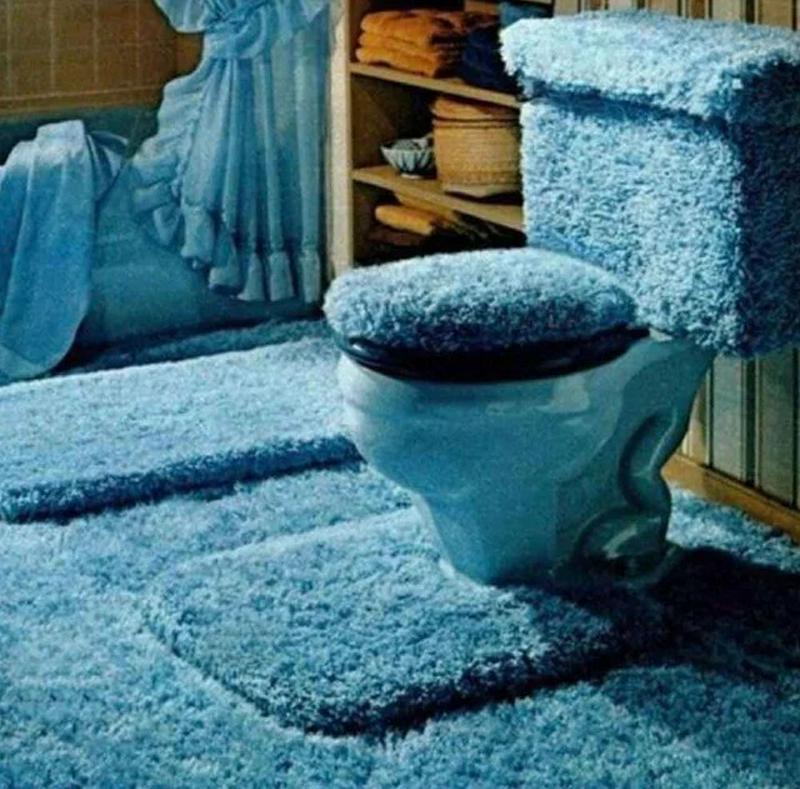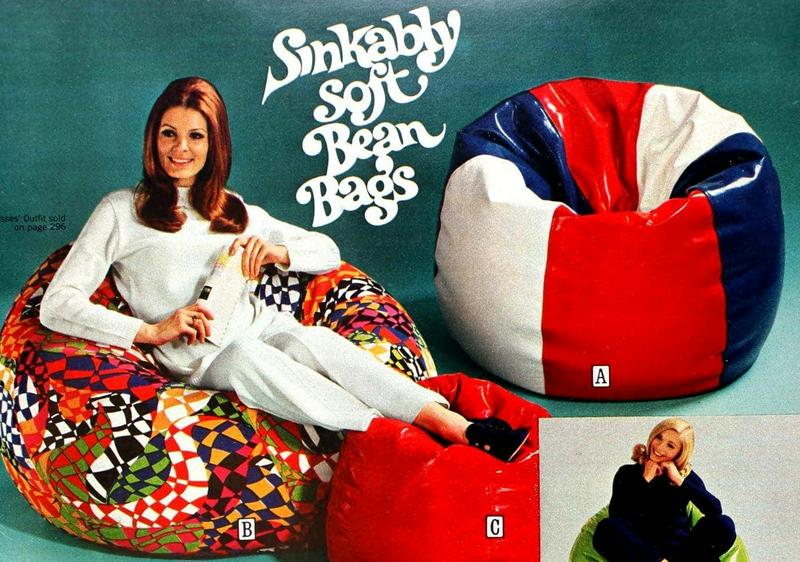20 Things That Happened In The '70s That You Totally Forgot About
The Rise and Fall of Shag Carpeting
The 1970s were a vibrant and transformative decade that saw significant worldwide cultural, political, and social changes. Marked by diverse music genres like disco, rock, and punk, the '70s saw the flourishing of artistic expressions and counterculture movements. It was an era when individuals embraced personal freedom and challenging societal norms. At the forefront of social change were the Civil Rights Movement and gender equality. Politically, the period was marked by the end of the Vietnam War and the Watergate scandal, both of which led to widespread skepticism toward authority and government institutions.
Notwithstanding all of the political and social strife, the era also witnessed the rise of environmentalism and a growing awareness of the need for sustainable practices. Economic contributors like the oil crisis and high inflation influenced global trade and led to increased economic instability. Despite all of these momentous changes, the '70s also enjoyed an uptick in technology and product development, and we're going to look at all of right here. From pop culture trends to groundbreaking technology, the '70s had it all.

Though shag carpeting made a bold statement, its maintenance was less than ideal. Shag carpeting was a challenge to keep clean because of its deep piling; it easily trapped dirt and required frequent vacuuming. The '70s shag carpeting remains a nostalgic symbol of the era's unique and eclectic design aesthetic; however, it will doubtfully make a comeback anytime soon.
The Advent of Bean Bag Chairs

Perfect for lounging in a rec room, dorm room, or sun-soaked living space, being ensconced in a bean bag chair was made for ultimate relaxation. These chairs became a symbol of counterculture and rebellion, reflecting the desire to break free from traditional furniture norms and embrace a more casual lifestyle. Bean bag chairs continue to be a popular accent piece but with updated colors, fabrics, and shapes on today’s market.
Man’s Best Friend: The Pet Rock

The Pet Rock craze captured the spirit of the '70s. It provided a quippy commentary on the absurdity of consumerism, people's desire for companionship, and the quickness with which Americans cling to trends. Most of all, though, it provided a lighthearted escape from the complex issues of the time.
Egg Chairs and the Introduction of the Accent Chair as We Know It Today

With their distinctive egg-shaped design, these chairs boasted a curved backrest that enveloped the occupant. The upholstery was typically made from vibrant and textured fabrics like velvet or leather, adding a touch of luxury to any interior. The '70s egg chairs captured the spirit of the era with their funky and avant-garde aesthetic, making them a sought-after collector's item. Egg chairs eventually paved the way for a swinging version and other spin-off chair designs that are still popular today.
The Comings and Goings of Big Collars
 The 1970s was a decade known for its iconic fashion trends, one of which was big collars like the ones John Travolta donned in "Saturday Night Fever." These exaggerated collars were popular among both men and women, adding a touch of drama to any outfit. Big collars were often seen on shirts, blouses, and even dresses, serving as a bold statement piece.
The 1970s was a decade known for its iconic fashion trends, one of which was big collars like the ones John Travolta donned in "Saturday Night Fever." These exaggerated collars were popular among both men and women, adding a touch of drama to any outfit. Big collars were often seen on shirts, blouses, and even dresses, serving as a bold statement piece.The Innovation of Music-on-the-Go With 8-Track Tapes

Despite some drawbacks, 8-track tapes gained popularity due to their portability and availability for a wide range of genres. However, their reign as a dominant music medium was short-lived. Cassette tapes offered superior sound quality and more advanced features, and compact discs soon followed suit. Today, 8-track tapes are considered a nostalgic relic, with collectors and enthusiasts preserving their limited selection of music and the vintage experience they once offered. Of note, some of the bestselling early 8-tracks were recorded by bands such as Crosby, Stills, & Nash, Johnny Cash, and Creedence Clearwater Revival.
The Presto Hot Dogger Delivered Tasty Treats in a Jiff

Conveniently, the Presto Hot Dogger had adjustable settings, allowing users to choose their preferred level of doneness. The Hot Dogger also included a bun warmer on top. As a versatile appliance, the Hot Dogger could also be used to cook other foods like sausages and bratwurst. Its simple operation and easy cleanup made it a popular choice for hot dog enthusiasts or anyone looking to cook quick, delicious meals. Notably, its construction was low-profile, so it could be easily stored away after each use.
Cozy Conversation Pits: A Funky Home Design Element

The pits became widely popular during this era as they embodied the spirit of the time: individual expression, comfort, and innovation. A combination of vibrant colors and geometric patterns typically used in styling the pits added a groovy '70s aesthetic. Conversation pits were a fun visual element in many homes of the era. Although the trend eventually faded away, the '70s conversation pit was a trendsetting design element that has cemented its place in architectural history.
The Corded Phone and the Popularization of the Landline

The technology of the '70s corded phone was simple, so it required patience and precision to successfully place a call. Besides its functionality, the phone's aesthetic varied from sleek and modern to flamboyant and colorful, reflecting the diverse trends of the 1970s. The corded phone placed us one step closer to the advent of the cellphone. Nevertheless, it reminds us of a simpler time when conversations were focused on the dialogue, free from the distractions of flashy screens and notifications.
Sea Monkeys: A Quirky '70s Pet Trend

The process of owning a Sea Monkey began by rehydrating the eggs in water mixed with the purifier. Over time, Sea Monkeys would hatch and grow, transforming into small aquatic creatures with long tails and fluttering antennae. Once developed, owners could watch them swim around their mini aquarium. People of the '70s became mesmerized by their whimsical behaviors, feeding them, and marveling at their evolution. These quirky creatures left an indelible mark on the memories of those who enjoyed ownership of these unique little pets.
Televisions of Yesteryear

The screens emitted a soft, warm glow, a stark contrast to the bright, vivid images of today’s televisions. CRT TVs were typically housed in wooden cabinets that turned television sets into pieces of furniture, too. These early televisions were where families would gather to enjoy moments of shared entertainment. With few channel options to choose from, families would eagerly await their favorite shows to air, creating a sense of anticipation and a common cultural experience. This is much different from the on-demand programming we’re used to nowadays.
How Transistor Radios Defined Portable Listening

These portable, pocket-sized devices made bringing your music on-the-go a new reality in the '70s. People could tune in to their favorite AM or FM radio stations and listen to music, sports, and talk shows wherever they went. Whether at the beach, the park, or on a road trip, the transistor radio was a trusty companion. They were powered by batteries and had a built-in speaker or earphone jack for personal listening. These iconic gadgets were the epitome of '70s cool and defined the '70s listening experience.
The Walkman Took Portable Listening to the Next Level

The Walkman easily fit into one’s pocket or backpack, and it featured two headphone jacks, enabling music sharing with a companion. The Walkman’s sleek design made it popular among music enthusiasts. In the wake of the Walkman, mixtapes became a cultural phenomenon that allowed users to curate their playlists like never before. The '70s Walkman paved the way for later advancements in portable music technology, serving as a precursor to CD players, MP3 players, and streaming music devices.
How Rattan Furniture Embodied the Spirit of the '70s

The '70s rattan furniture had earthy, organic appeal with light-brown and honey-hued tones. It gave off a laid-back vibe that perfectly complemented the casual and carefree lifestyle of the era. Rattan furniture was also incredibly durable and lightweight, making it a popular choice for both indoor and outdoor furnishings. Whether it was used in living rooms, bedrooms, or patios, this iconic furniture style instantly added a touch of rusticity to any space.
Groovy Lava Lamps and Their Staying Power

Lava lamps were popular in homes, offices, and dorm rooms, serving as both a decorative piece and a conversation starter. They could be purchased in an array of vibrant colors that mirrored the fashion and artistic trends of the '70s. Even today, lava lamps continue to evoke nostalgia for the vibrant '70s era.
Stone Fireplaces and Their Enduring Appeal

The '70s stone fireplaces were typified by large, chunky hearths and mantels, providing ample space for décor and displaying much-loved knickknacks. These fireplaces also often featured built-in seating areas or hearth benches, creating a warm place to gather around the fire. Overall, '70s stone fireplaces added a touch of nature and charm to homes, capturing the essence of the era's design style. Although the colors, materials, and arrangement of these stone fireplaces have evolved, they’re still a popular home design element today.
The Origin of the Wallpaper Trend

Additionally, geometric shapes and bold stripes were also popular wallpaper patterns. Colors were often bold and contrasting, such as deep oranges, browns, and yellows, as well as earthy tones and shades of green. The patterns and colors of the '70s wallpaper reflected the spirit of the time, embracing a funky and eccentric aesthetic. Wallpaper continued to be popular throughout the '80s and '90s before falling off for a bit; however, wallpapered accent walls and spaces are currently experiencing a resurgence.
Were Waterbeds Really That Great?

Waterbeds were also touted for their therapeutic benefits. They were said to reduce stress to pressure points, improve blood circulation, and relieve back pain. Additionally, they were seen as a symbol of counterculture, reflecting a more free-spirited and unconventional lifestyle. However, waterbeds gradually declined in popularity as advancements in mattress technology and concerns over leaks and maintenance surfaced.
How Mood Rings Measured Your Mood

Mood rings came with a graphic that explained the stone’s color-to-mood relationship. The ring’s vibrant colors and minimalist design correlated perfectly with the vibe of the decade. People would often wear these rings as a way to express their emotions or as a conversation starter. The popularity of mood rings in the '70s has endured, and these funky rings can still be found in gift shops across America. They’re a much-loved accessory among tweens.
Macramé: Crafting With a New Spin

Macramé is a fiber craft that became uber-popular in the '70s. It involved creating intricate decorative knots using materials such as yarn, rope, or cord. Macramé plant hangers, intricate wall hangings, and complex jewelry could be crafted by tying knots in pretty patterns.
Its rustic aesthetic reflected the bohemian and hippie culture of the era. Macramé was not only a popular hobby but also a way for individuals to express their creativity and individuality. The craft allowed people to personalize their spaces and add a touch of handmade charm to their homes. Today, the '70s macramé style is experiencing a revival, with modern interpretations and contemporary designs inspiring a new generation of crafters.
No comments: